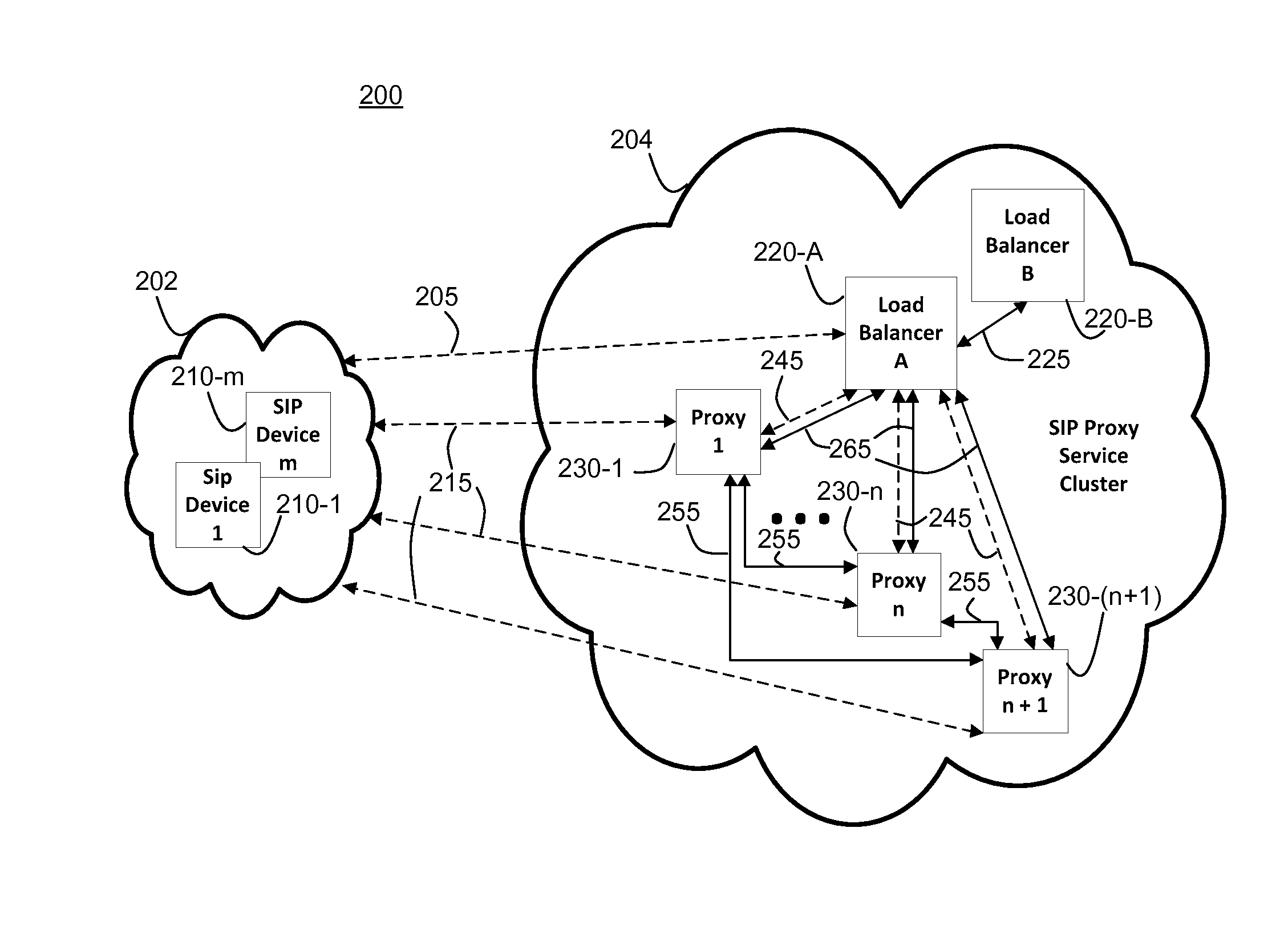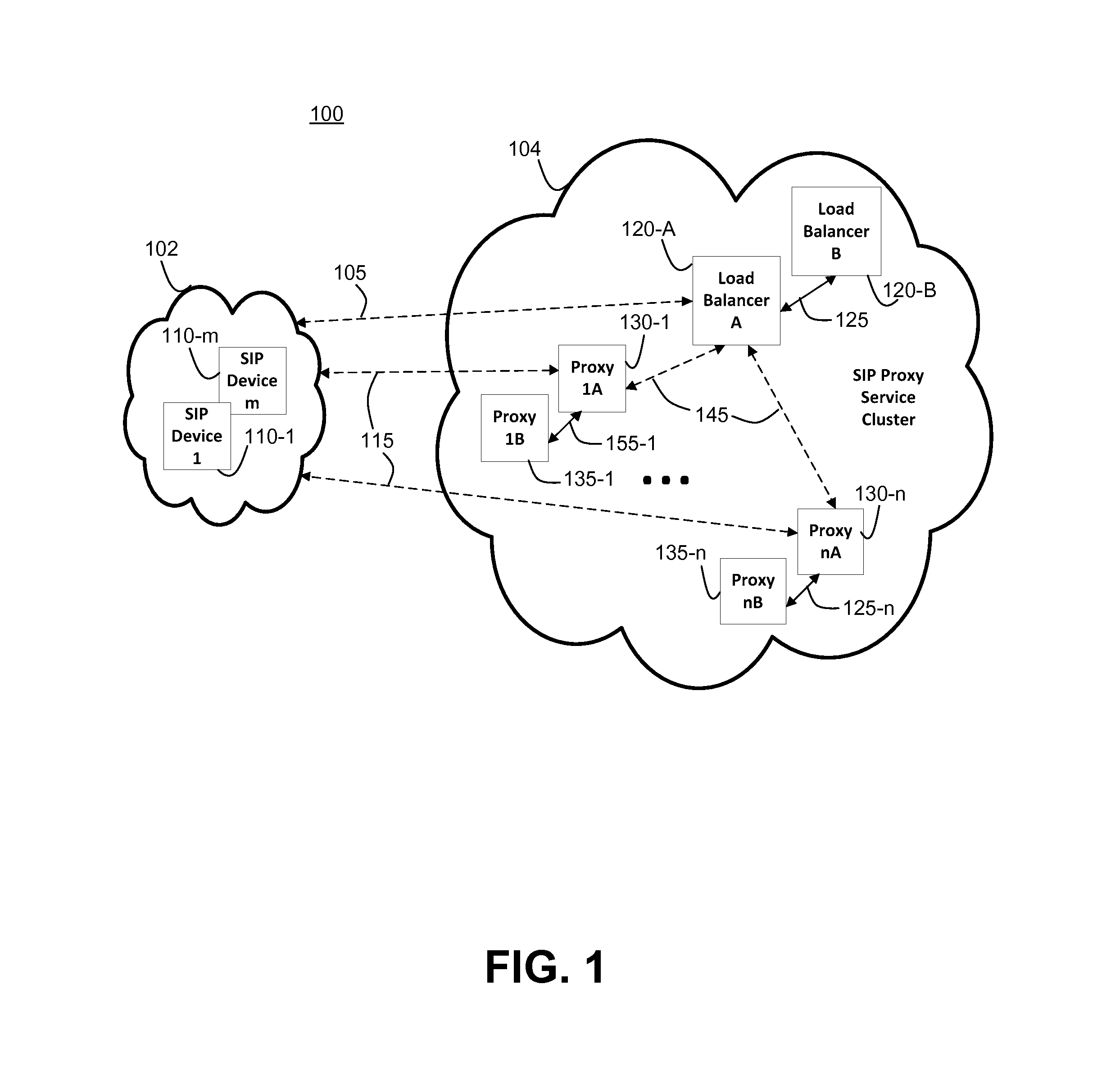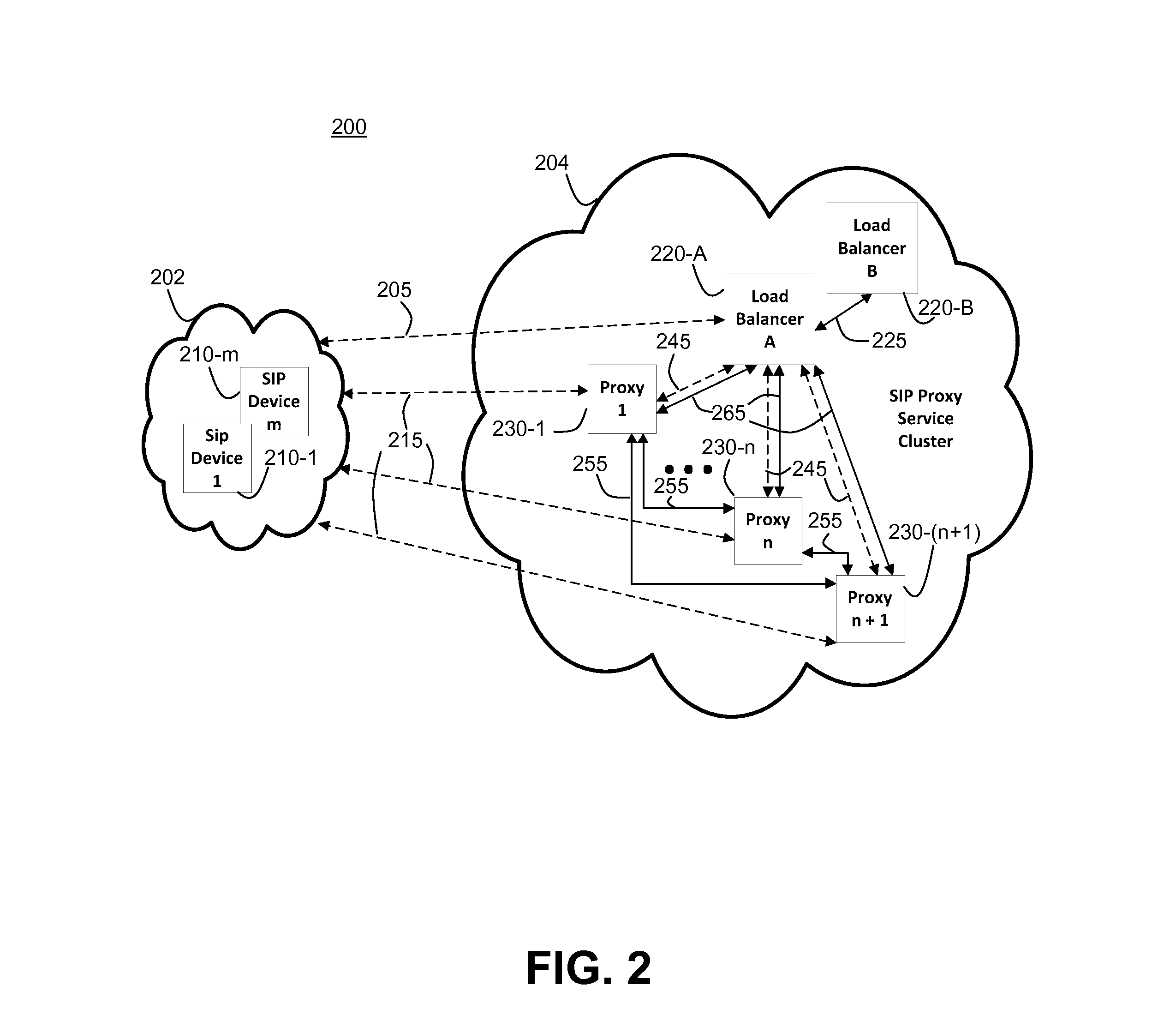Load Balancing for SIP Services
a load balancing and sip service technology, applied in the field of processing load balancing, can solve the problems of limiting the scalability of sip load balancers, stateless systems do not maintain a record, and additional sip load balancers cannot be added
- Summary
- Abstract
- Description
- Claims
- Application Information
AI Technical Summary
Benefits of technology
Problems solved by technology
Method used
Image
Examples
Embodiment Construction
[0029]Certain embodiments enable a SIP load balancer to efficiently manage multiple stateful SIP proxy server instances with minimal header parsing and minimal state tracking at the SIP load balancer. Certain embodiments also avoid the need for header manipulation, for example SIP messages relating to the SIP process are passed between a communicating device and the SIP server instance, implemented on a SIP node server, without modification by the load balancer.
[0030]In some embodiments a step of receiving state data for a set of SIP processes comprises receiving, at the load balancer, a periodic notification of state data for a set of SIP processes from the SIP server instance, the state data for a set of SIP processes in a notification indicating SIP processes that the SIP server instance has completed since a previous notification. This enables the data structure of a SIP load balancer to be periodically updated to remove completed calls and avoid memory overload problems.
[0031]I...
PUM
 Login to View More
Login to View More Abstract
Description
Claims
Application Information
 Login to View More
Login to View More - R&D
- Intellectual Property
- Life Sciences
- Materials
- Tech Scout
- Unparalleled Data Quality
- Higher Quality Content
- 60% Fewer Hallucinations
Browse by: Latest US Patents, China's latest patents, Technical Efficacy Thesaurus, Application Domain, Technology Topic, Popular Technical Reports.
© 2025 PatSnap. All rights reserved.Legal|Privacy policy|Modern Slavery Act Transparency Statement|Sitemap|About US| Contact US: help@patsnap.com



